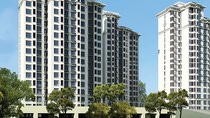Sustainability
Helping passive house design reach great heights

When is a Passive House active? It sounds like a trick question. In fact, Passive Houses belie their name. A Passive House is a building which adopts an integrated design and construction methodology to actively optimize energy. BASF technology is helps buildings save up to 90% of the energy consumed for heating and cooling in both new and existing buildings.
Passive House structures are designed to reduce the need for heating or cooling systems to the absolute minimum. Positioning, shading and other conscientious design elements, high-performance materials, and strategies to capture or recover energy from the sun, internal heat sources like lights and appliances, combine to create a comfortable environment. These system design features also enable Passive House buildings to maintain exceptional indoor air quality-- protecting the health of the people inside.
Considering that worldwide buildings account for 40% of energy-related greenhouse gas emissions, reducing building energy consumption also contributes meaningfully to slowing global warming.
The first Passive House structures were built in Europe in the 1990s. They were designed primarily to maintain a comfortably warm indoor climate during cold winter months. This approach also has a huge potential for use in warmer climates like South and Southeast Asia, where the aim is to use strategic shading to keep comfortably cool. Rising incomes in countries such as India, China and Indonesia are prompting people to buy a range of appliances, from refrigerators and stoves to televisions and computers - all of which introduce convenience, but also heat. The International Energy Agency notes that the concurrent surge in demand for air conditioners in developing countries to provide relief from both high outside temperatures and heat generated from all these appliances - including other air conditioners.
China is beginning to embrace the Passive House approach. In fact, the Passive House approach was specifically mentioned in China's 13th 5 Year Plan, as a strategy for achieving the country's building energy efficiency goals. BASF supports this growing market through research, development and deployment of energy-saving building materials, such as innovative insulation that both prevents dispersion of hot or cool air and helps protect air quality. Energy efficiency of Passive House buildings has the potential for significant impact in China, potentially delivering up to 90% energy savings over current buildings. BASF was delighted to share its expertise on sustainable construction in support of twin passive house sky-scrapers being built in the Sino-Singapore Eco City in Tianjin.
“Passive homes benefit both people and the planet. It is really exciting to see BASF innovations at the heart of these 21st century homes.” said Dr. Qu Jianqiang, General Manager, BASF Construction Chemicals Company Greater China, “Collaborating with suppliers and partners to develop innovations that will make homes even more energy efficient, really shows how working together we can create a sustainable future.”